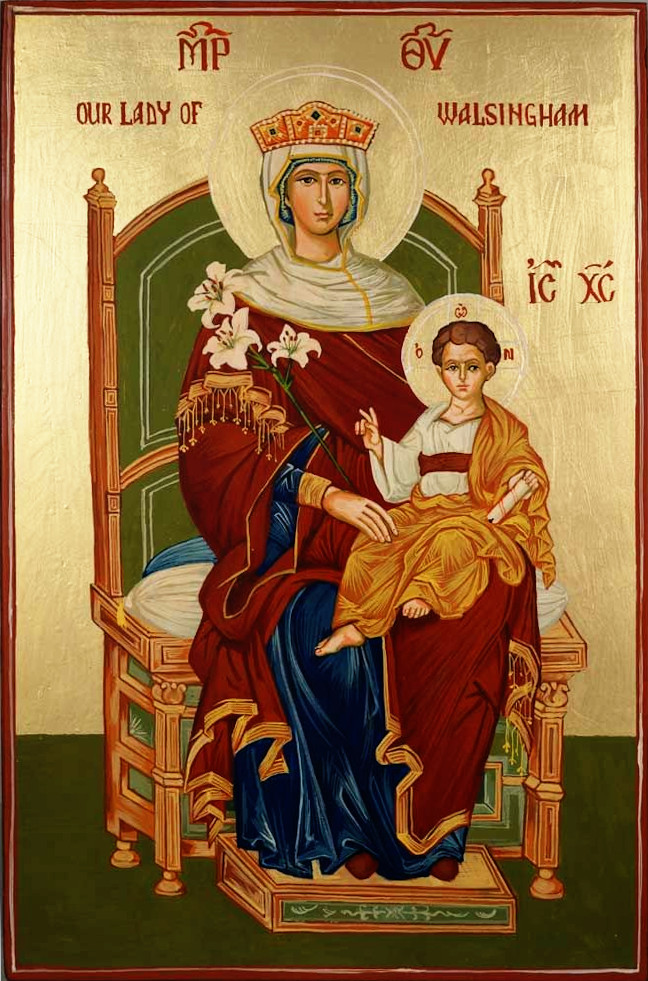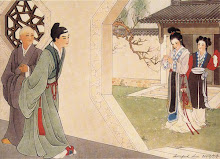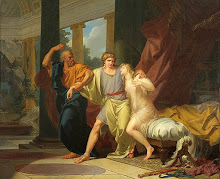10 March 2018
The Well at the World’s End
The usual SPOILER ALERT stands here. I go into detail about many of the key elements of the plot, so please be forewarned!
To say that William Morris is a gifted spinner of yarns would be a massive understatement, as would it be to say that said yarns have been profoundly influential. Even were it not for the fact that both CS Lewis and JRR Tolkien were avowed fans of the well-spoken wordsmith of Walthamstow, and owned as much gladly and openly enough between them for a dozen such authors, a perlustration of a novel like The Well at the World’s End would yield a wealth of witness to that very fact. At the same time, though, the Well with all its rough edges has as much of a kinship resemblance to the works of Robert E Howard (on whose ‘low fantasy’ sword-and-sorcery novels Morris apparently left as indelible a mark) as to the ‘high fantasy’ epics of his better-hoofed Inkling fans.
The Well at the World’s End is the tale of Ralph, the youngest son of the King and Queen of Upmeads, as he escapes from home and undertakes a perilous and nigh-impossible journey to the eponymous Well – a single draught from which is rumoured to improve one’s health, regenerate one’s beauty, lengthen one’s life severalfold and cast a certain luck and grace over one’s endeavours. As he sets off from home, he is given a set of beads by his godmother Katherine, which mark him as a quester for the Well. Ralph being a doughty and rather selfless lad, he gives his help to poor and imperilled people that he meets, and so makes a number of friends and well-wishers, and a few powerful enemies. The novel sprawls with a wealth of detail about the landscapes and societies that Ralph must traverse: the Perilous Wood, the Burg of Four Friths, the Land of Abundance, the Cheaping Knowe, the Uttermost Lands, the Dry Tree and the abode of the Sorceress that stands on the road to the Well.
Ralph starts out his quest with very little guidance and even less clue of what he’s doing, and he’s primarily guided by his emotions of sympathy and affection. He learns very early on that not everyone he meets is to be trusted or has his best interests at heart. He encounters, and either falls in love with or is seduced by, the beautiful and beguiling Lady of Abundance, who is never given a proper name in the entirety of the story, and who remains something of an enigma throughout. The accounts of the Lady of Abundance given by the people she rules, by her enemies and even by herself are contradictory and irreconcilable, and two distinct images of her emerge. Is she one of the ‘fey’, an amoral temptress who bewitches men and drives them to madness before leaving them? Is she merely, as she herself claims and as Ralph believes to the end, a simple girl who led an eventful life, whose preternatural beauty and other gifts all come from the Well (from which she drank)? It’s a testament to Morris’s storytelling ability that not only is that question left unresolved, but both interpretations of the Lady of Abundance make sense given what we’re told. Ralph saves her life on one occasion, and she later returns the favour after he is captured by the Knight of the Sun, her estranged husband who murders her in a jealous rage.
It’s really only after the Lady of Abundance is murdered that Ralph, driven by a mixture of grief and resolve, begins his pursuit of the Well in earnest – a sign of Ralph’s budding maturation as a character. He happens upon one of his brothers, whose valet is an old friend to the House of Upmeads and who directs Ralph on a road that leads through Cheaping Knowe to Utterbol, near which lives one of the men of his old hometown of Swevenham – who was said to have sought the Well some forty years back. Following these leads, and also the memory of a peasant girl he met at Bourton Abbas, and fancied early on in his quest, he sets off for Utterbol.
It’s here that the parallels with Howard’s novels become more obvious. The villains that Ralph faces are not powerful Dark Lords, dragons, necromancers or supernatural demons. They are men, and their evil is also very human. Ralph’s primary enemies are the quasi-Spartan warrior-citizens of the Burg of Four Friths, the slavers of Cheaping Knowe, and the lord of Utterbol. Ralph falls foul of the last, a debauched petty tyrant who takes pleasure in the torture, mutilation, castration and rape of his victims. Ralph learns of the yeoman girl he’d been seeking that she was taken captive by wild men and led by one of them, Bull Nosy, to be sold as a slave at Cheaping Knowe; however, she proved so unruly that Nosy decided to try his luck instead at Utterbol. He encountered the Lord of Utterbol on the road, who murdered him and took the yeoman girl as his own slave.
This yeoman girl, whom Ralph later learns is named Ursula, is in some ways the most admirable character in the novel. She is not blessed with Ralph’s extraordinary good luck (though they share identical tokens from Well-seekers, we learn later that Ursula didn’t get the effect of it because it had to be given by an admirer of the opposite sex), but sets off in pursuit of the Well on her own initiative and her own power. In the face of all the same dangers that beset Ralph, she proves herself to be resourceful, level-headed, understanding and kind. She falls in love with Ralph early on, but only dares to show it after he saves her from attack by a bear. But far from being a helpless damsel, she then goes on to save Ralph’s life multiple times and takes something of the more active rôle in leading him to the Sage of Swevenham, and from there to the Well.
After they have found the Well, they begin the journey back home. Quite typically of the fantasy novels to follow, and particularly those of Tolkien, Ralph sets out from home full of youthful impetuosity, longing for adventure and love and fame. But once he’s achieved his goals, having suffered loss and hardship and becoming somewhat more sure of himself, he finds that all he really desires is to see his beloved parents again, to love and serve them and his people of Upmeads. The road he sets out on ends at the same place he started, and Morris beautifully arranges the structured chiasmus to the entire story, as carefully as if it were one of his intricate floral-geometric wallpaper patterns. That’s something that Tolkien clearly strove for in his own writing.
As the two lovers and Well-friends approach Upmeads, they find that the world they traversed in their quest has changed – sometimes for the better and sometimes for the worse. The tyrant of Utterbol has been overthrown and replaced by the avenging brother of Bull Nosy, Bull Shockhead, whom Ralph had befriended on the road there – though Shockhead has plans to undo and make amends for Utterbol’s prior tyranny. The queen of Goldburg, having pined sorely after Ralph, abdicated her throne to her kinsmen. The champions of the Dry Tree, having suffered the death of their Lady, led a slave revolt against the Burg of Four Friths, and the former denizens thereof – bereft of their home by their former slaves – went on a rampage, killing and sacking towns and villages in the direction of Upmeads, driving Ralph’s parents and people out of their homes. The climactic confrontation is between Ralph, with the friends he’s made in his quest at his side, and the marauding former Burgers. If you’re noticing parallels with the Scouring of the Shire here, gentle reader, rest assured – you aren’t the only one!
Morris’s class politics make themselves felt more strongly here than in The Wood Beyond the World. It’s telling that the single most heroic character in the book, Ursula of Bourton Abbas, is a peasant and former slave, a woman used to working with her hands and arms and legs in the fields. The representatives of the ‘nobility’ are much more of a mixed bag: Ralph, obviously, has all the marks of a hero, but he is somewhat susceptible to being misled both by his naïveté and by his hormones; on the other hand, the Lord of Utterbol practically embodies the libido dominandi of the worst elements of his class. And the Lady of Abundance is so elusive and enigmatic herself as to embody Morris’s own ambiguous relationship to the elder ruling class. And lastly, the bourgeoisie: though there are examples of honourable and good members of the middle class (most notably Clement Chapman and his wife Katherine), the people of Cheaping Knowe and the Burg of Four Friths are generally portrayed as narrow, bigoted and unfeeling scoundrels, and their ‘capitalist’ exploitation of the poor is often portrayed as equally bad if not worse than that under the feudal kingdoms.
This sprawling fantasy epic, though overshadowed by the better-known novels that it inspired, is very much worth reading and enjoying in its own right. As with The Wood Beyond the World, Morris’s deliberately-antiquarian language can be a bit daunting at first, but once one gets used to it the artistry of his word choice and phrasing itself can be a source of reading pleasure.
Labels:
Anglophilia,
books,
Britannia,
lefty stuff,
nerdiness,
science fiction
Subscribe to:
Post Comments (Atom)














No comments:
Post a Comment